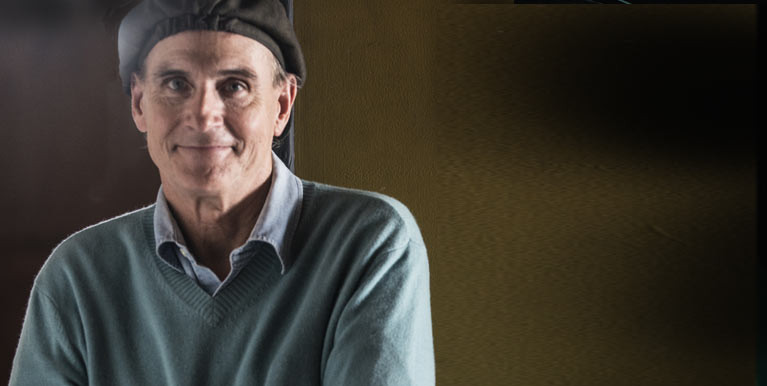THE BOSTON GLOBE – Fond memories of Tanglewood
The first time I tried to find Tanglewood, I drove right past it. I had been hired by Peter Gelb to be his assistant as the Boston Symphony Orchestra’s assistant manager.
I hadn’t been back to Tanglewood since childhood visits.
SeveralU-turns later, I spotted the tiny wooden sign, swinging in the breeze from a wooden pole, with the hand-painted letters “Tanglewood.”
It was so amazingly non-annunciatory! How Bostonian, how New England, how Tanglewood-ian.
That was 32 years ago and not a lot has changed on that front. The signs have been reworked into a slightly larger version, but there is still, blessedly, nothing to really herald this world-class destination sandwiched between the towns of Lenox and Stockbridge.
The Berkshires were a very different place back then.
There was a single restaurant in Lenox, now long gone, called Ganesh which morphed into Café Lucia. And there was Loeb’s, our life-line to the outside world as the repository of the morning papers. None of us had televisions in our rental homes; there was no cable, no Internet, no cell phones; the land-lines at Tanglewood were, at best, temperamental and would quickly sputter and die at the mention of lightening.
Back then, the press office at Tanglewood was housed next to the Main Gate; it had a flat tar roof upon which the sun would beat down mercilessly; if one could wheedle a fan from Jim Kiley, who ran the physical plant, one was very lucky.
Before each concert, the office would be converted into make-shift bar for the press. There were plates of Freihofer’s chocolate chip cookies and lots of gin.
In many ways, a trip to Tanglewood was much more of an elitist excursion. Although the years of passing out paper skirts to under-dressed patrons had disappeared, ticket holders for the Shed dressed for the occasion: the women in silk wraps and heels sure to be ruined by the Tanglewood turf.
My first summer began with an all Copland concert conducted by the composer himself. There were performances by Dietrich Fischer-Dieskau, Jon Vickers paired with Jessye Norman in the second act of Wagner’s “Tristan,’’ Die Wintereise, a remarkable Verdi “Requiem.’’
Seiji Ozawa presided over it all in his impeccably tailored white mandarin-collared Hanae Mori creations with his mane of jet-black hair.
Seranak, (the name deriving from an acronym of Serge and Natalie Koussevitzky) and their former home overlooking Tanglewood, the Stockbridge Bowl and clear down to Connecticut, was acquired in 1981. It soon became the locus of post-concert soirees and a pre-concert Supper Club. One of the earliest parties there, after the BSO had reclaimed it, was an 80th birthday celebration for Copland, attended by Ozawa and Leonard Bernstein.
I was given the task of capturing the cake-cutting in a photo. “Get those three together and do it now!” hissed Gelb. New at wrangling anything, I tried in vain to corral them for a photo. The BSO’s late photographer, Walter Scott, gently put an arm around Lenny ( as he was known to all) and Aaron and signaled me to grab Seiji. Voila, success.
The visitations by Bernstein were always a high point of the summer. When he arrived “on campus” in his gleaming vintage Mercedes with its “Maestro One” license plates, one could feel the electricity ripple through the grounds. Everyone was at attention.
I found that being the junior press officer made for good scape goat material.
In the early eighties, Bernstein had designated one of his performances as a benefit to the Tanglewood Music Center. The three-sheet (the in-house name for the large posters by the Main Gate) neglected to mention this. Bernstein, for whom the strict rules regarding automobiles on the grass were discarded, noticed this omission upon driving past the entrance. He was furious. I was summoned.
There clearly had been some miscommunication about this but since these posters were within my purview, I was the one who was told to explain. I delivered an abject apology. He was gracious and forgiving, surveying me with a cigarette in one hand and silver cup of some libation in the other.
I escaped unscathed.
I was also summoned a number of times to try and assuage visiting conductors who were less than pleased with the reviews they had received. One such visit occurred at Wheatleigh, the elegant resort near Tanglewood. For a 26-year-old, this was very heady stuff, waiting in the Italianate grand foyer
I was shepherded to the garden where an illustrious German maestro was pacing and whacking the table with the newspaper in question. This is “schrecklis” he kept shouting. I want this man brought to me.”
I tried to explain that this wouldn’t be possible which further infuriated him. He muttered, “In Germany, we handle this differently.” Indeed.
Tanglewood, ultimately, is more than the sum of its parts; more than patchwork memories of a Mahler symphony, an appearance by an Ewok, a glimpse of greatness, the image of the orchestra resplendent in white. It is walking across that great expanse of lawn and feeling there may be a greater truth to be revealed or that somehow, one has access just for this moment, to something greater than oneself.
There is a mystery and a beauty that belongs to this place. On a summer’s Sunday afternoon, with a cool Berkshire breeze and a cloud scuttling by and the orchestra about to tune, one can’t help invoke Robert Browning:
“God’s in his heaven, all’s right with the world.”
Caroline Taylor is a trustee of the Boston Symphony Orchestra.
[Source: Boston.com]

